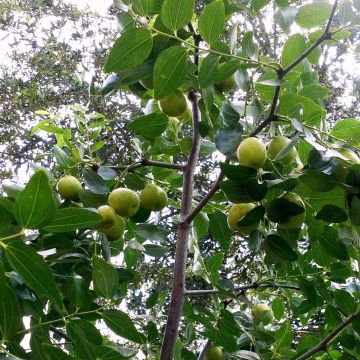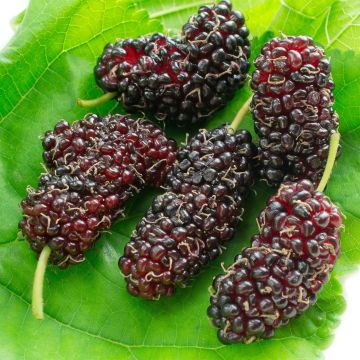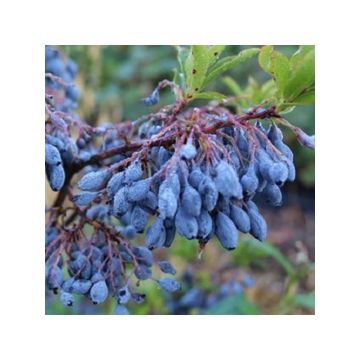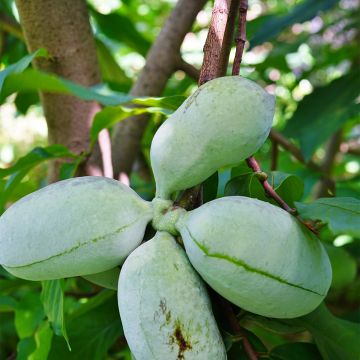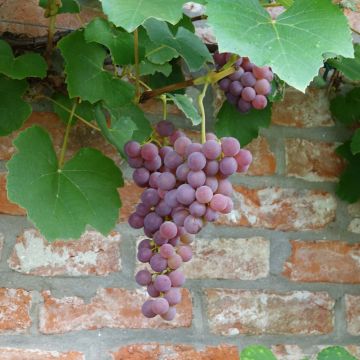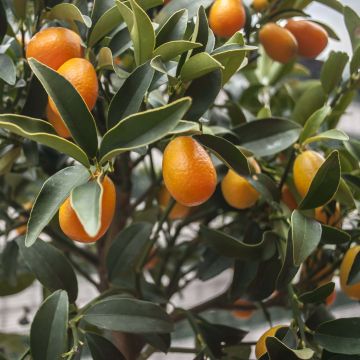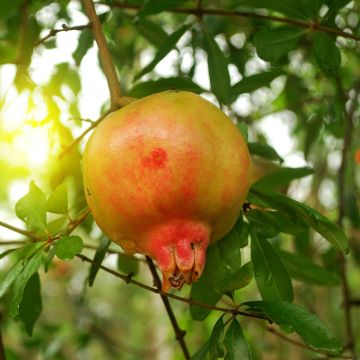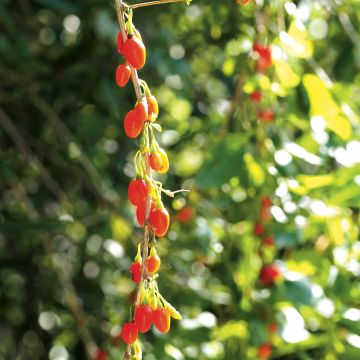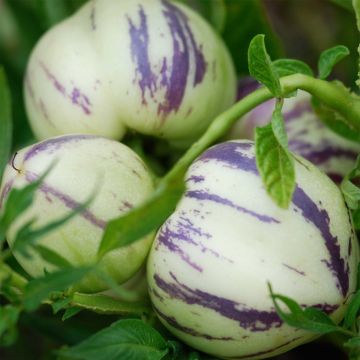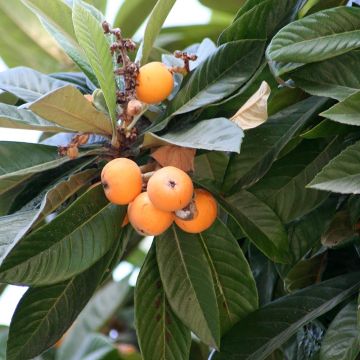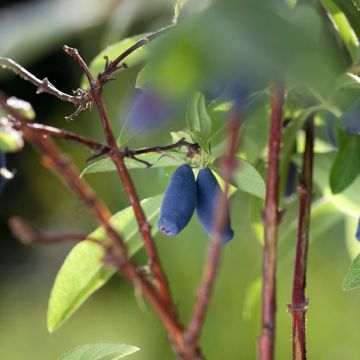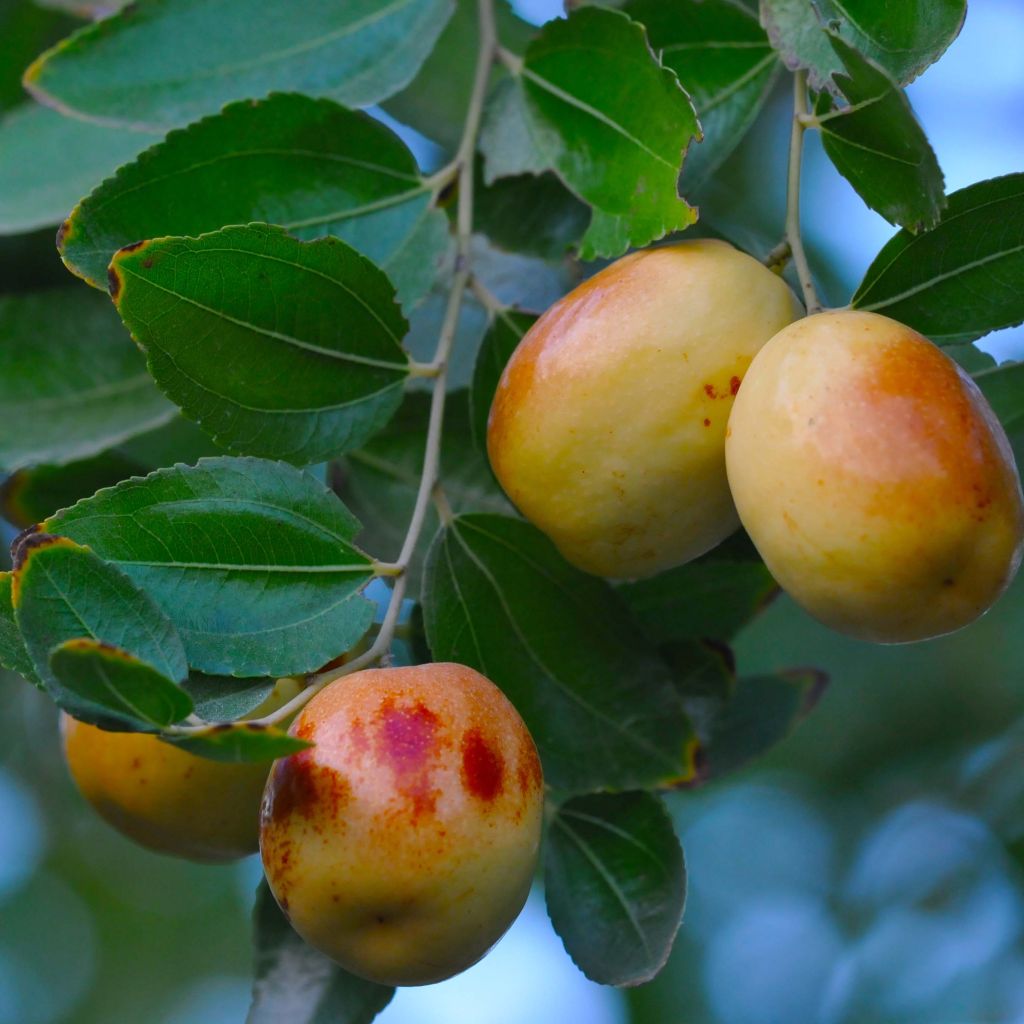

Ziziphus jujuba
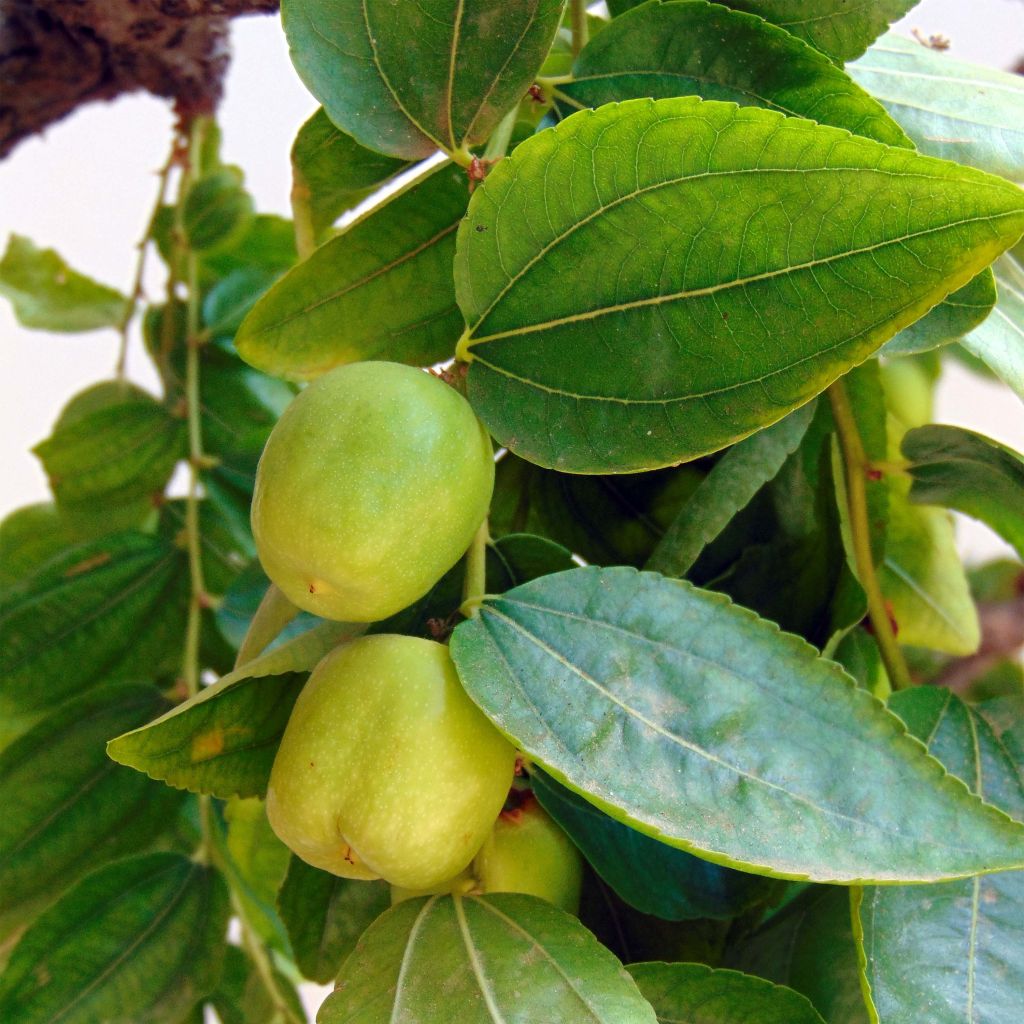

Ziziphus jujuba
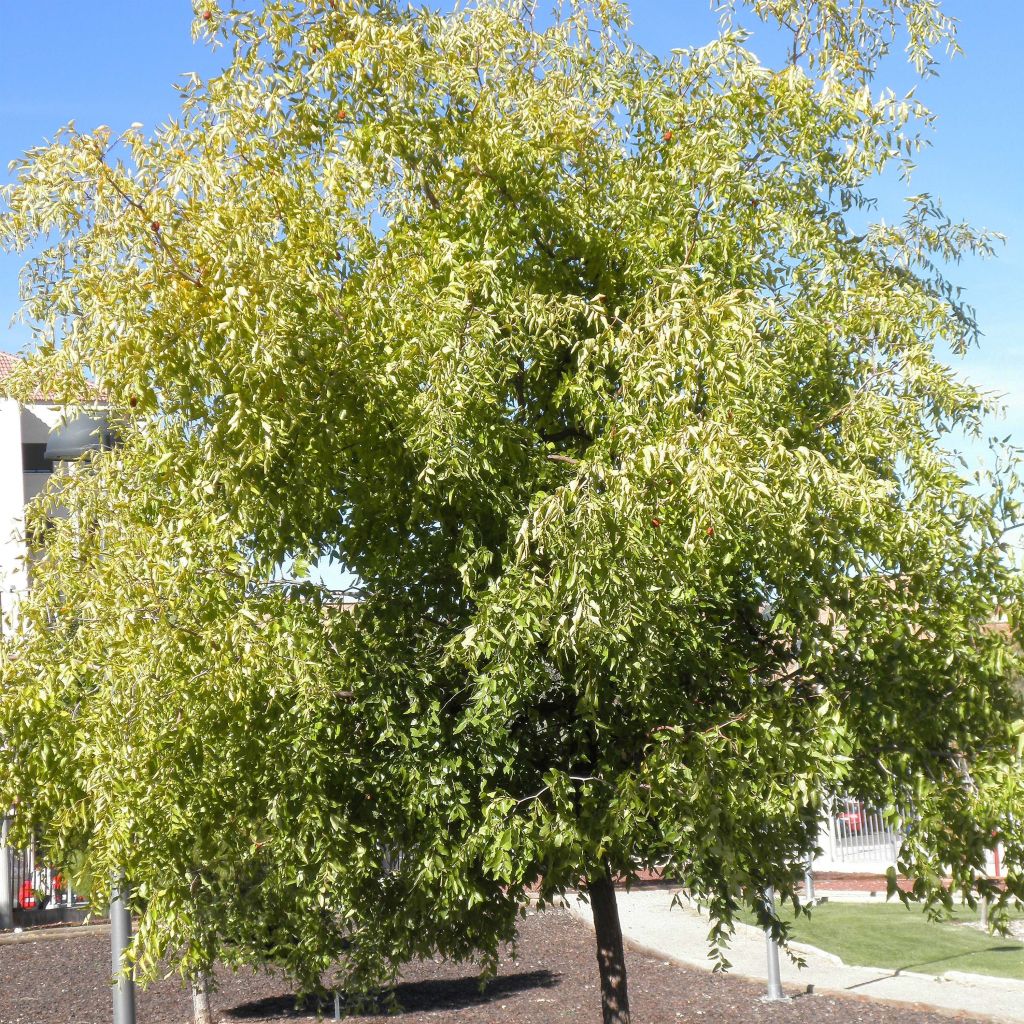

Ziziphus jujuba
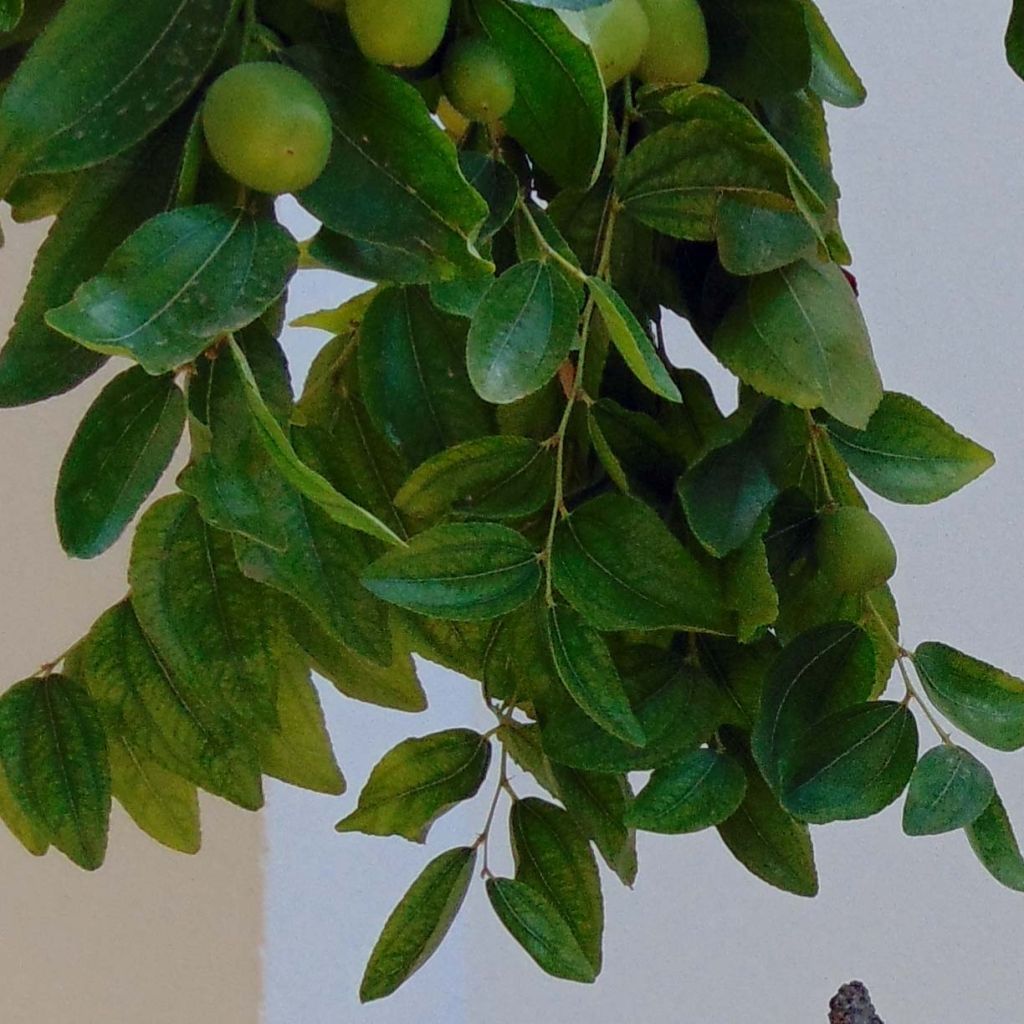

Ziziphus jujuba
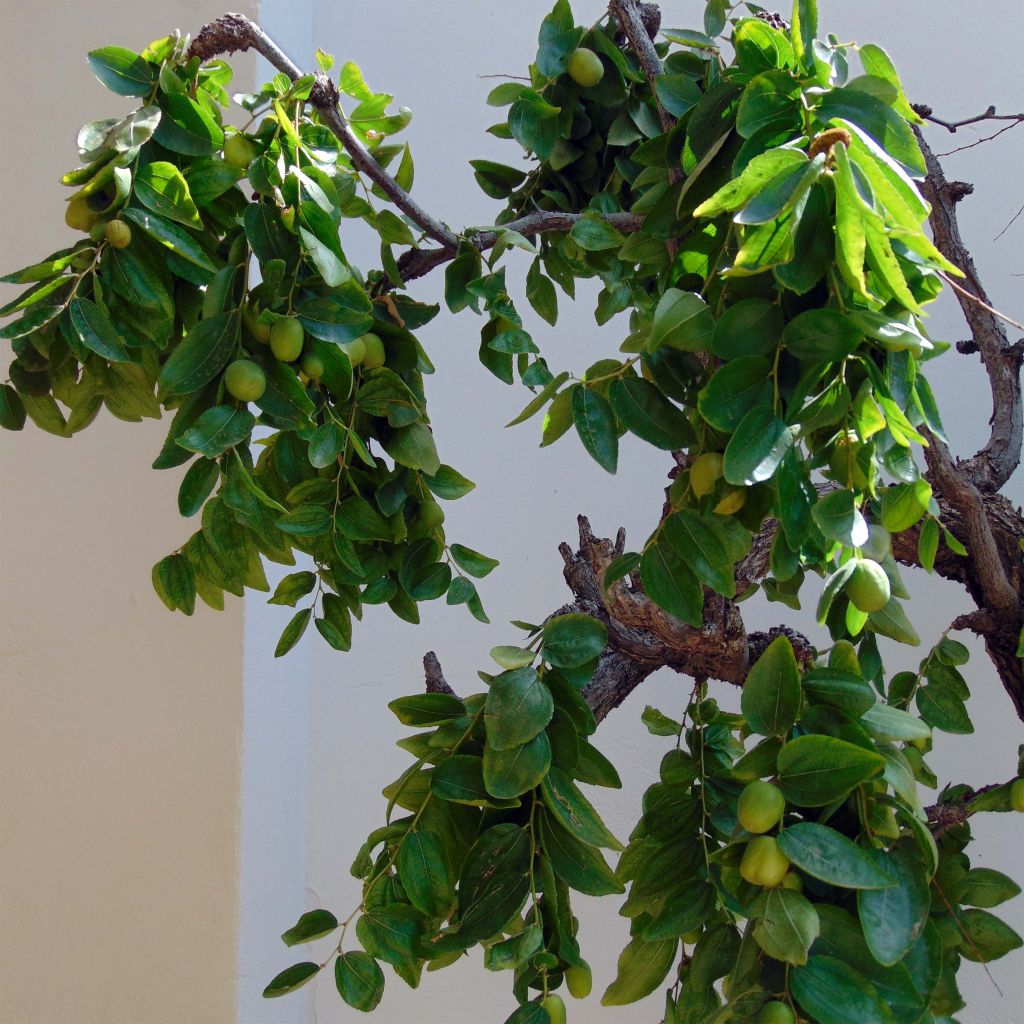

Ziziphus jujuba
Ziziphus jujuba
Ziziphus jujuba
Jujube, Red Date, Chinese Date
This item cannot be shipped to the selected country
Oversize package delivery charge from €6.90
Oversize package delivery charge from €6.90
More information
Schedule delivery date,
and select date in basket
This plant carries a 24 months recovery warranty
More information
We guarantee the quality of our plants for a full growing cycle, and will replace at our expense any plant that fails to recover under normal climatic and planting conditions.
Oversize package: home delivery by special carrier from €6.90 per order..
Express home delivery from €8.90.
Oversize package: home delivery by special carrier from €6.90 per order..
Express home delivery from €8.90.
Does this plant fit my garden?
Set up your Plantfit profile →
Description
The Common Jujube, in Latin Ziziphus jujuba, is a small fruit tree of Chinese origin that was once widely planted in the Mediterranean region, especially in orchards. These small reddish and fleshy fruits, called jujubes or sometimes Chinese dates were harvested in autumn and winter to be consumed cooked, dried or candied. In ornamental gardens, the jujube offers beautiful glossy foliage that turns golden yellow in autumn, the winter presence of its cracked, almost black bark, and a discreet but fragrant and very nectar-rich flowering.
The Ziziphus jujuba is a small tree with thorny branches and foliage growing from China to Asia Minor, mostly on chalky, dry, clayey soils. It belongs to the family of Rhamnaceae. It is a cousin of Rhamnus alaternus (Italian buckthorn), Frangula (Buckthorn), but also of Ceanothus. It is a self-fertile plant, capable of living for many years in the garden. The jujube has a robust root system, both deep and extensive: an established specimen is capable, when cut back to the ground, of producing numerous shoots emerging more than 10 m (33ft) from the base, which are challenging to get rid of. This trait is not ideal for a small garden but is perfect for creating impenetrable thickets or defensive hedges on the edge of a large property.
This small tree with a single or multiple trunk has an erect habit and a bushy crown supported by fairly flexible and trailing branches. It grows quickly, reaching about 6 m (20ft) in height and 3 m (10ft) in width, depending on the growing conditions. Its bark becomes very dark and rough with age. The tree has thorny branches that are dark brown, and they bear small lanceolate leaves with short petioles. The leaves are leathery, finely toothed on the edge, and measure 2 to 5 cm (1 to 2 inches) long. Three veins mark them, and the upper side of the lamina is shiny. The flowering takes place from June to August, depending on the climate, in the form of tiny yellowish to greenish flowers devoid of petals grouped in small clusters in the axils of the leaves. They are not very visible but pleasantly fragrant, attracting many pollinating insects. The flowers are followed by fruits on plants at least 5 years old. These are small ovoid drupes that resemble olives—their colour changes from light green to reddish-brown when ripe. The fruit has little pulp surrounding the hard stone. Over-ripe fruit has a date-like consistency and a mildly sweet taste.
In a favourable climate, the common jujube can be planted in an orchard and an ornamental garden alongside fruiting pomegranates, olive trees, fig-trees, and grapevines. If not grown for its fruits, it is perfectly possible to integrate it into a living or defensive hedge, where it can be planted with hawthorn, Pyracantha, Japanese quince, and thorny roses such as Rosa rugosa or the climbing 'Mermaid'. All these plants are undemanding, perfectly self-sufficient once established, ornamental, and valuable for biodiversity.
Report an error about the product description
Ziziphus jujuba in pictures


Plant habit
Flowering
Foliage
Botanical data
Ziziphus
jujuba
Rhamnaceae
Jujube, Red Date, Chinese Date
Southeast Asia
Other Jujube trees - Ziziphus
Planting and care
When planting a jujube bush, choose a sunny or partially shaded spot with well-drained soil. If you live in a dry and warm climate, plant it in autumn and in spring if you live somewhere else. Avoid planting it near house walls as its roots grow long distances. The jujube bush grows well in ordinary soil but prefers deep, fertile and chalky soil. Once established, it can tolerate summer droughts. Water generously once or twice a week to promote recovery and only twice a month from the third year onwards, and only if there is a drought. The jujube bush requires little maintenance and doesn't need pruning except for removing old trunks. Fertiliser is optional, but if your soil is poor, add a little at the bottom of the planting hole. If you remove an old jujube bush, be aware that it will produce countless shoots for several years. Once acclimated, the jujube bush is almost indestructible.
Planting period
Intended location
Care
This item has not been reviewed yet - be the first to leave a review about it.
Unusual and exotic fruit trees
Haven't found what you were looking for?
Hardiness is the lowest winter temperature a plant can endure without suffering serious damage or even dying. However, hardiness is affected by location (a sheltered area, such as a patio), protection (winter cover) and soil type (hardiness is improved by well-drained soil).

Photo Sharing Terms & Conditions
In order to encourage gardeners to interact and share their experiences, Promesse de fleurs offers various media enabling content to be uploaded onto its Site - in particular via the ‘Photo sharing’ module.
The User agrees to refrain from:
- Posting any content that is illegal, prejudicial, insulting, racist, inciteful to hatred, revisionist, contrary to public decency, that infringes on privacy or on the privacy rights of third parties, in particular the publicity rights of persons and goods, intellectual property rights, or the right to privacy.
- Submitting content on behalf of a third party;
- Impersonate the identity of a third party and/or publish any personal information about a third party;
In general, the User undertakes to refrain from any unethical behaviour.
All Content (in particular text, comments, files, images, photos, videos, creative works, etc.), which may be subject to property or intellectual property rights, image or other private rights, shall remain the property of the User, subject to the limited rights granted by the terms of the licence granted by Promesse de fleurs as stated below. Users are at liberty to publish or not to publish such Content on the Site, notably via the ‘Photo Sharing’ facility, and accept that this Content shall be made public and freely accessible, notably on the Internet.
Users further acknowledge, undertake to have ,and guarantee that they hold all necessary rights and permissions to publish such material on the Site, in particular with regard to the legislation in force pertaining to any privacy, property, intellectual property, image, or contractual rights, or rights of any other nature. By publishing such Content on the Site, Users acknowledge accepting full liability as publishers of the Content within the meaning of the law, and grant Promesse de fleurs, free of charge, an inclusive, worldwide licence for the said Content for the entire duration of its publication, including all reproduction, representation, up/downloading, displaying, performing, transmission, and storage rights.
Users also grant permission for their name to be linked to the Content and accept that this link may not always be made available.
By engaging in posting material, Users consent to their Content becoming automatically accessible on the Internet, in particular on other sites and/or blogs and/or web pages of the Promesse de fleurs site, including in particular social pages and the Promesse de fleurs catalogue.
Users may secure the removal of entrusted content free of charge by issuing a simple request via our contact form.
The flowering period indicated on our website applies to countries and regions located in USDA zone 8 (France, the United Kingdom, Ireland, the Netherlands, etc.)
It will vary according to where you live:
- In zones 9 to 10 (Italy, Spain, Greece, etc.), flowering will occur about 2 to 4 weeks earlier.
- In zones 6 to 7 (Germany, Poland, Slovenia, and lower mountainous regions), flowering will be delayed by 2 to 3 weeks.
- In zone 5 (Central Europe, Scandinavia), blooming will be delayed by 3 to 5 weeks.
In temperate climates, pruning of spring-flowering shrubs (forsythia, spireas, etc.) should be done just after flowering.
Pruning of summer-flowering shrubs (Indian Lilac, Perovskia, etc.) can be done in winter or spring.
In cold regions as well as with frost-sensitive plants, avoid pruning too early when severe frosts may still occur.
The planting period indicated on our website applies to countries and regions located in USDA zone 8 (France, United Kingdom, Ireland, Netherlands).
It will vary according to where you live:
- In Mediterranean zones (Marseille, Madrid, Milan, etc.), autumn and winter are the best planting periods.
- In continental zones (Strasbourg, Munich, Vienna, etc.), delay planting by 2 to 3 weeks in spring and bring it forward by 2 to 4 weeks in autumn.
- In mountainous regions (the Alps, Pyrenees, Carpathians, etc.), it is best to plant in late spring (May-June) or late summer (August-September).
The harvesting period indicated on our website applies to countries and regions in USDA zone 8 (France, England, Ireland, the Netherlands).
In colder areas (Scandinavia, Poland, Austria...) fruit and vegetable harvests are likely to be delayed by 3-4 weeks.
In warmer areas (Italy, Spain, Greece, etc.), harvesting will probably take place earlier, depending on weather conditions.
The sowing periods indicated on our website apply to countries and regions within USDA Zone 8 (France, UK, Ireland, Netherlands).
In colder areas (Scandinavia, Poland, Austria...), delay any outdoor sowing by 3-4 weeks, or sow under glass.
In warmer climes (Italy, Spain, Greece, etc.), bring outdoor sowing forward by a few weeks.

































